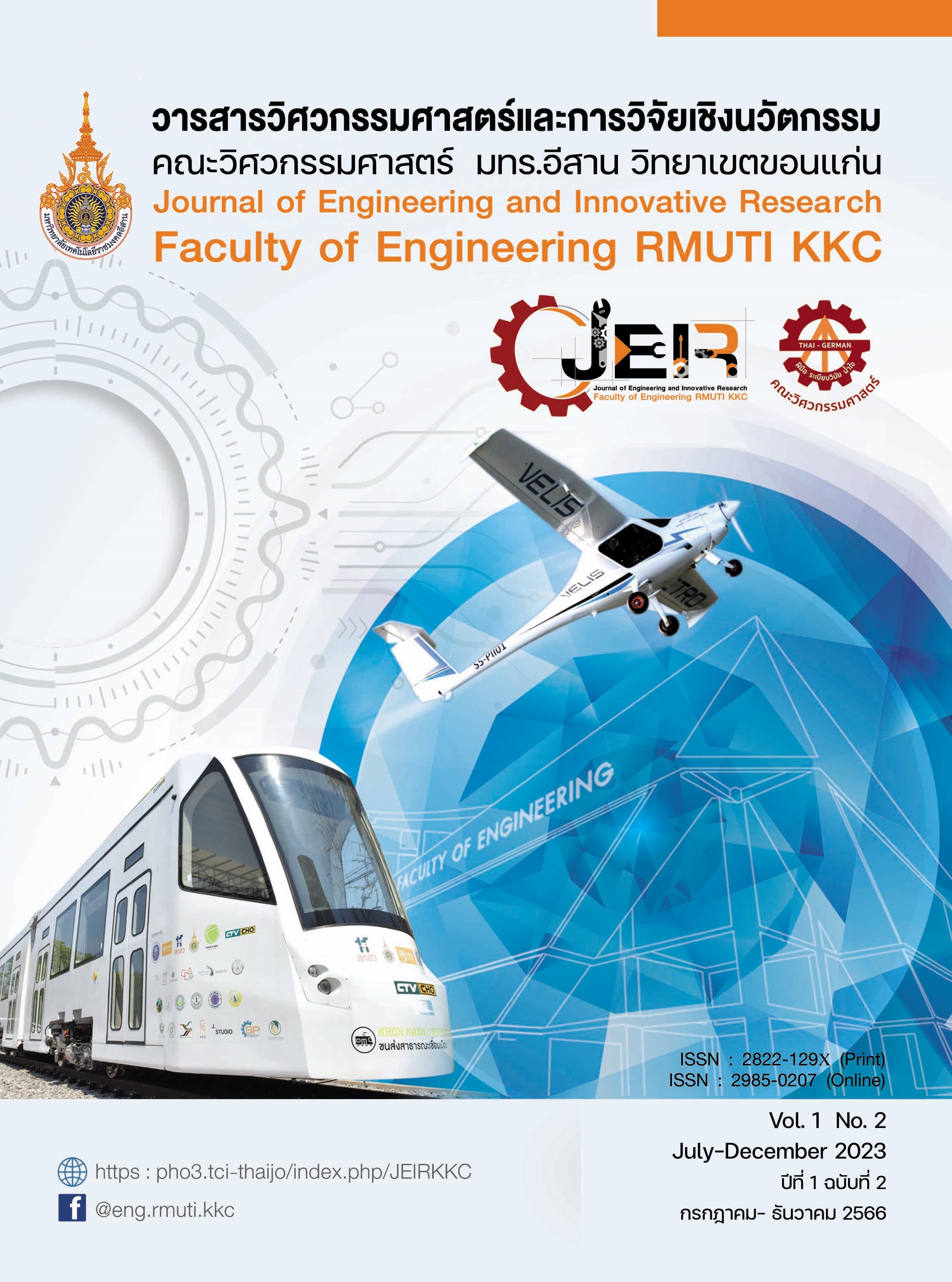Magnetic Field Modeling of a Single-Arm Pantograph a 25 kV Overhead Power Transmission System for Electric Railway Using a 3D Finite Element Method
Keywords:
finite element method, pantograph, electromagnetic fieldAbstract
The research presents a mathematical model of the magnetic field generated by a single upper-arm pantograph in a 25 kV overhead power transmission system for railways, expressed through second-order partial differential equations. Computer simulation results were obtained using the 3D finite element method implemented in the MATLAB program, providing graphical analyses of the magnetic field distribution around the pantograph in a steady state. The study simulated the magnetic field distribution in a single-arm upper pantograph structure and analyzed the magnetic field distribution of a pantograph with a graphite contact strip and brass as the contact strip material. The magnetic field values under the transmission line, particularly at the center, have the most significant impact on the pantograph, measuring 5.9840 and 5.7515, respectively. The overall pantograph averages 0.0559 and 0.0501, respectively. It is observed that the average and maximum values of the magnetic field for graphite contact strips have a higher average distribution than brass contact strips but remain similar. Therefore, graphite and brass materials exhibit properties suitable for substituting pantograph contact strips.
References
Eric Bonneton, (1994). Pantograph Project, University: McGill Research Centre for Intelligent Machines McGill.
S. Fray, (2012). Railway Electrifi-cation Systems & Engineering. Delhi: White Word Publications. http://site.ebrary.com/ id/10501851.
ธนัดชัย กุลวรวานิชพงษ์, (2018). Railway Electrification SUT 1st EDITION, (พิมพ์ครั้งที่ 3), มหาวิทยาลัยเทคโนโลยีสุรนารี.
J. Wu, (2018). Pantograph and Contact Line System, Academic Press, China.
C. C. Maier, A. Schirrer, M. Kozek, (2018). Real-time capable nonlinear pantograph models using local model networks in state-space configuration, Mechatronics, vol.50, no. 11, pp. 292-304.
A. Schirrer, G. Aschauer, E. Talic, M. Kozek, S. Jakubek, (2017). Catenary emulation for hardware-in-the-loop pantograph testing with a model predictive energy-conserving control algorithm, Mechatronics, vol.41, pp. 17-28.
S. Tupsie, A. Isaramongkolrak, and P. Pao-la-or, (2009). Analysis of Electromagnetic Field Effects Using FEM for Transmission Lines Transposition, The World Academy of Science Engineering and Technology, Tokyo, Japan, vol. 3, no. 5, pp. 870-874.
A. Bunmat and P. Pao-la-or, (2015). Analysis of magnetic field effects operators working a power transmission line using 3-D finite element method, 2015 18th International Conference on Electrical Machines and Systems (ICEMS), Pattaya, Thailand, pp. 1187-1191.
P. Saikham, P. Pao-La-Or, T. Yuangkaew, and A. Bunmat, (2023). Electromagnetic Field Simulation of Pantograph for Electric Train Using 3D Finite Element Method, 2023 International Electrical Engineering Congress (iEECON), Krabi, Thailand, pp. 68-71.
M. V. K. Chari and S. J. Salon, (2000). Numerical methods in electromagnetism, Academic Press, USA.
Jr. W. H. Hayt and J.A. Buck, (2006). Engineering Electromagnetics (7th edition), McGraw-Hill, Singapore.
S. Hadi, (1999). Power System Analysis, Senior Consulting Edition (3rd ed.), New York: Mc-Graw Hill.
R. Lerch, (1990). Simulation of piezoelectric devices by two and three dimension finite element, IEEE Transactions on Ultrasonics, 37 (2): 233-247.
M. Ibrahim and A. Abd-Elhady, (2017), Calculation of Electric Field and Partial Discharge Activity Reduction for Covered Conductor/High Voltage Insulator Systems, Electric Power Systems Research, vol. 144, pp. 72-80.
Y. Fan, H. Li, and S. Yang, (2018). Simulation Study on Electric Field Intensity above Train Roof, Advances in Materials, Machinery, Electronics II AIP Conf. Proc. vol. 1955, pp. 040066-1 – 040066-6.
P. Pao-la-or, and A. Bunmat, (2019). Shielding of Magnetic Field Effects on Operators Working a Power Transmission Lines Using 3-D FEM, International Journal of Mechanical Engineering and Robotics Research, vol. 8, no. 5, pp. 779-785.
International Commission of Non-Ionizing Radiation Protection (ICNIRP), (1998). Guidelines for Limiting Exposure to Time-Varying Electric, Magnetic and Electromagnetic Fields (up to 300 GHz), Health Phys, vol. 74, no. 4, pp. 494-522.
T. Zhao, W. Teng, H. Hao, P. Sun, and Y. Liu, (2019). Simulation Research on Electromagnetic Shielding Characteristics of Carbon Fiber Car Body for Railway Vehicles, 8th International Congress of Information and Communication Technology (ICICT), vol. 154, pp. 537–542.
S. D. Pawar, , P. Murugavel, and D. M. Lal (2009). Effect of relative humidity and sea level pressure on electrical conductivity of air over Indian Ocean, Journal of geophysical research, vol. 114, D02205.
A. Uygun and J. I. Velasco (2012). Electrical Conductivity Modeling of Polypropylene Composites Filled with Carbon Black and Acetylene Black, International Scholarly Research Network ISRN Polymer Science.
Downloads
Published
How to Cite
Issue
Section
Categories
License
Copyright (c) 2023 Journal of Engineering and Innovative Research

This work is licensed under a Creative Commons Attribution-NonCommercial-NoDerivatives 4.0 International License.




